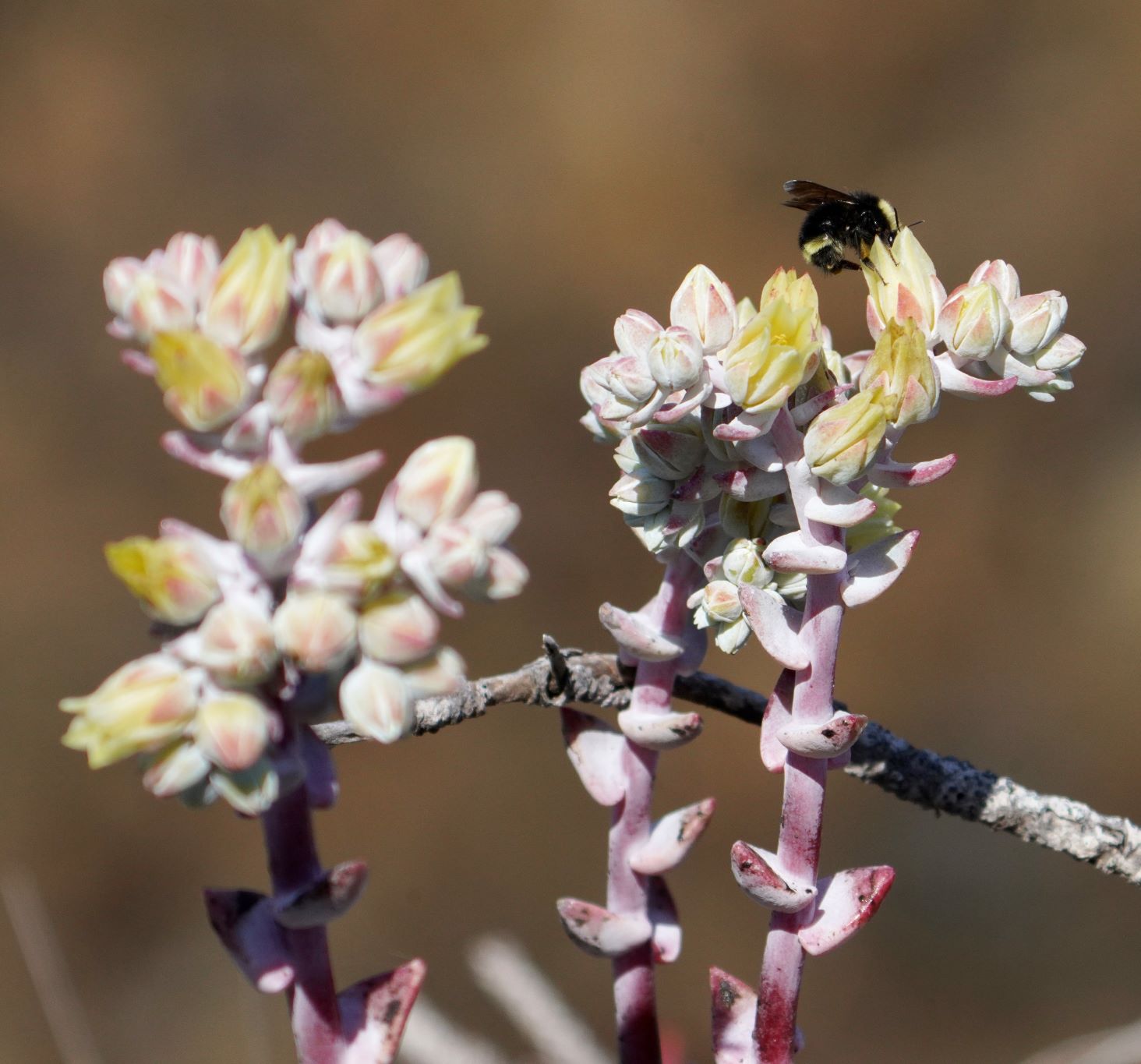Crassulaceae: Stonecrop Family — Dudleya
The Stonecrop family members are mostly succulents, with basal rosettes of fleshy leaves. Dudleya has numerous cylindrical flowers, ranging from bright yellow to deep orange-red. Other genera, such as Sedum (Stonecrop) and certain Crassula, have star-shaped flowers. Some plants in this family have an unusual photosynthesis variation, called CAM (Crassulacean Acid Metabolism). These plants conserve water by keeping their pores closed during the day, and opening them at night.
Dudleyas are an attractive genus, except when trying to identify them. Although some have clearly distinguishing characteristics, all of them hybridize readily. Intergrades of at least four of the species found in Monterey are common. In some species, the caudex (the woody, persistent base of the plant) is visible beneath the leaves, and its size can be an important element in identifying the plant. The height of the flower stem can be another important indicator.
Sea Lettuce – Dudleya caespitosa
Blooms:
Apr–June
Plant Height:
10–60 cm
Flower Size:
Small
Origin:
Native
Habitat:
Coastal
Notes:
This has a terminal cluster of bright yellow flowers, the petals united for < 1/3 of their length, on curving red peduncles. There are usually several basal rosettes of leaves, up to 20 cm long. They are succulent, oblong to lanceolate or roundish. The leaves are more green than gray in color, unlike Bluff Lettuce (Dudleya farinosa, see below). Photos #1 and 4 by CJH.
Low Canyon Dudleya – Dudleya cymosa subsp. pumila
Blooms:
May–July
Plant Height:
5–15 cm
Flower Size:
Small
Origin:
Native
Habitat:
Rocky cliffs, slopes
Notes:
At first sight, this resembles Lance-leaved Dudleya (Dudleya lanceolata, see below). However, this is much shorter, and its flowers are reddish-orange (but may be yellow). Also, its leaves are proportionately broader, diamond-shaped to oblanceolate or spoon-shaped, with the margins upturned at the widest point and a recurved tip. Leaves may be green, or conspicuously glaucous.
Bluff Lettuce / Powdery Liveforever – Dudleya farinosa
Blooms:
May–June
Plant Height:
< 30 cm
Flower Size:
Small
Origin:
Native
Habitat:
Coastal
Notes:
This is often found near Sea Lettuce (Dudleya caespitosa, see above). It is a smaller plant, with pale yellow flowers. The leaves are oblong to ovate (not round), up to 6 cm long and may be glaucous (covered in a fine white waxy or powdery coating). To distinguish this from Sea Lettuce, look for smaller size, paler flowers and smaller, grayer, glaucous leaves. Photos #2 and 4 by CJH.
Lance-leaved Dudleya – Dudleya lanceolata
Blooms:
July–Aug
Plant Height:
15–95 cm
Flower Size:
Small
Origin:
Native
Habitat:
Soil or slopes with broken rocks
Notes:
Quite common inland. Distinguished by its long (5–30 cm) lanceolate leaves and the height of its peduncle. The flowers vary in color from bright yellow to reddish-orange.














